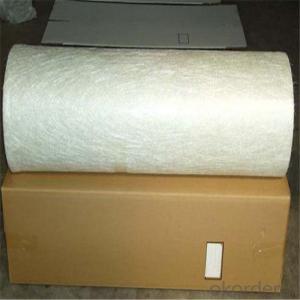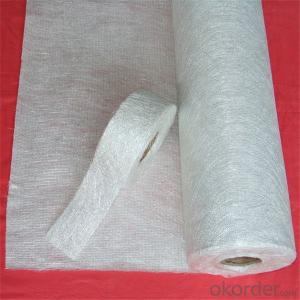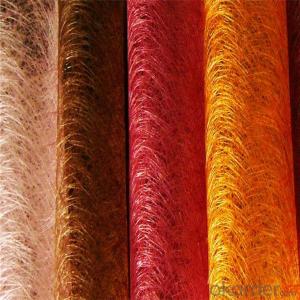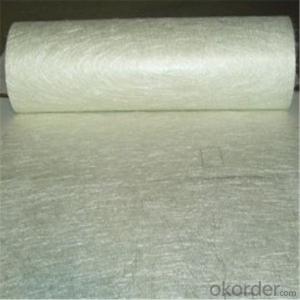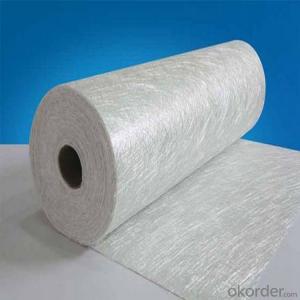E-glass Fiberglass Chopped Strand Mat
- Loading Port:
- Tianjin
- Payment Terms:
- TT OR LC
- Min Order Qty:
- 100 m.t.
- Supply Capability:
- 100000 m.t./month
OKorder Service Pledge
OKorder Financial Service
You Might Also Like
Quick Details
| Technique: | Chopped Strand Fiberglass Mat (CSM) | Dimensions: | 225g/m2-900g/m2 | Fiberglass Type: | E-Glass |
| Place of Origin: | China (Mainland) | Brand Name: | cnbm | Model Number: | 300G-900G |
| moisture: | ≤0.2% | combustion content: | 2.1-6.3% | binder type: | emulsion or powder |
| width: | 1040,1270,2080mm |
Packaging & Delivery
| Packaging Details: | plastic bag then carton then pallet |
| Delivery Detail: | 15 days after payment |
Advantage
1. Chopped strand mat is made up from fiberglass chopped strands bonded with powder binder or emulsion binder
2. Wet out faster and easy of handling
3. Good choppability
4.thickness uniformity
Apllication
fiberglass chopped strand mat
It is used for processing and manufacturing FRP products with getting through hand lay up process, filament winding process and press molding. Typical products is including bathroom accessories, pipe, building material, automobile, furniture, vessel, cooling towers and other FRP products
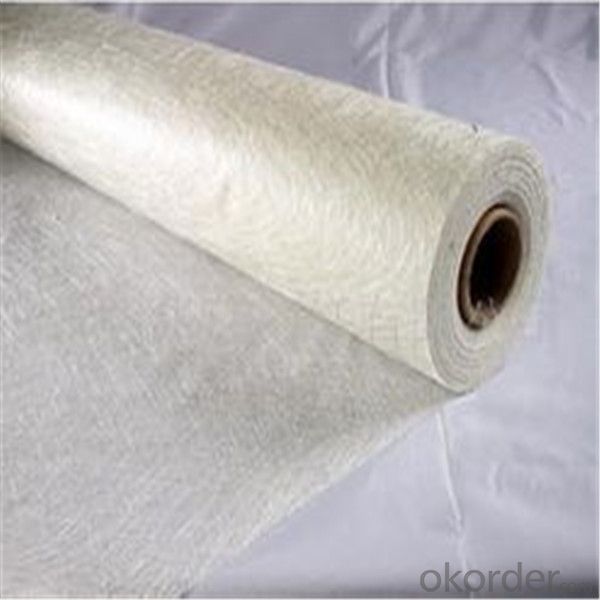

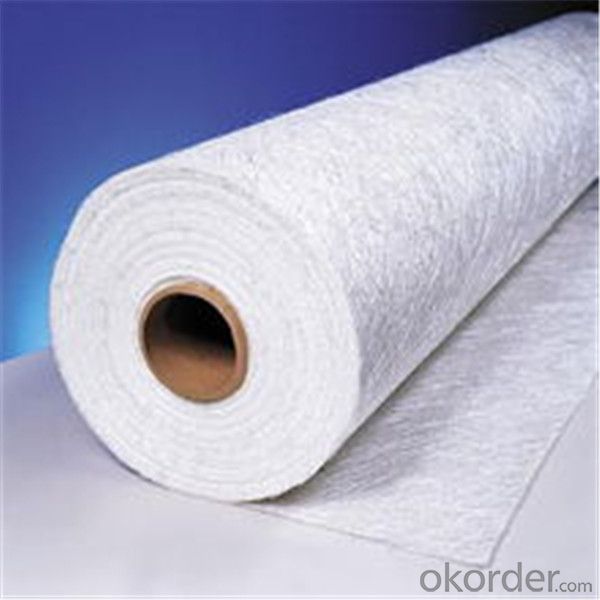
- Q:Is fiberglass chopped strand compatible with different recycling processes?
- Yes, fiberglass chopped strand is compatible with different recycling processes. It can be processed through mechanical recycling methods where it is shredded and then melted to form new products. It can also be chemically recycled through processes such as pyrolysis or solvolysis, where it is broken down into its constituent components for reuse. Additionally, fiberglass chopped strand can be used as a reinforcement material in composite recycling, where it is incorporated into new composite materials. Overall, fiberglass chopped strand is versatile and can be effectively recycled through various processes.
- Q:Is fiberglass chopped strand suitable for electrical conductive applications?
- Fiberglass chopped strand is not appropriate for electrical conductive applications. Due to its insulating nature, fiberglass does not conduct electricity. In fact, it is widely utilized in electrical applications due to its remarkable insulation properties. For applications that necessitate electrical conductivity, metals, carbon fibers, or conductive polymers would be more suitable alternatives.
- Q:Is fiberglass chopped strand UV resistant?
- Yes, fiberglass chopped strand is typically UV resistant. The UV resistance of fiberglass chopped strand is mainly attributed to the properties of the resin used to bind the strands together. Most resins used in fiberglass manufacturing, such as polyester or epoxy resins, have inherent UV resistance. Additionally, manufacturers often incorporate UV stabilizers into the resin formulation to enhance the UV resistance of the final product. This helps prevent the degradation of the fibers when exposed to sunlight or other sources of UV radiation. However, it is important to note that the level of UV resistance can vary depending on the specific resin formulation and manufacturing process. Therefore, it is recommended to consult with the manufacturer or supplier to ensure that the specific fiberglass chopped strand being used meets the required UV resistance specifications for the intended application.
- Q:Is fiberglass chopped strand suitable for applications requiring electrical conductivity?
- No, fiberglass chopped strand is not suitable for applications requiring electrical conductivity as it is an insulating material and does not conduct electricity.
- Q:What is the shear strength of fiberglass chopped strand?
- The shear strength of fiberglass chopped strand may differ based on various factors, including the length of the strands, the type of resin employed, and the manufacturing procedure. On average, the shear strength of fiberglass chopped strand can range from 20 to 70 MPa (megapascals). It is crucial to acknowledge that these values are approximate and subject to variation based on the specific application and testing conditions. Moreover, the shear strength can be significantly impacted by factors such as the orientation and alignment of the strands, the presence of any additives or reinforcements, and the overall quality of the material. Therefore, it is recommended to consult with manufacturers or carry out specific testing to ascertain the shear strength of fiberglass chopped strand for a particular application.
- Q:Can fiberglass chopped strand be used in composite manufacturing processes?
- Yes, fiberglass chopped strand can be used in composite manufacturing processes. Chopped strand is a form of fiberglass that has been cut into short lengths, typically 1-3 inches. It is commonly used as a reinforcing material in composite manufacturing, where it is mixed with a resin matrix to create a strong and lightweight composite material. The chopped strand is typically spread evenly throughout the resin matrix, either by hand or by using specialized equipment. The resin matrix then cures, creating a solid and durable composite material. The fibers in the chopped strand provide reinforcement to the composite, improving its mechanical properties such as strength and stiffness. Chopped strand is often used in processes such as hand lay-up, spray-up, and filament winding. It is a versatile material that can be used in a wide range of composite applications, including automotive parts, aerospace components, marine structures, and construction materials. In conclusion, fiberglass chopped strand is a commonly used material in composite manufacturing processes. It provides reinforcement to composite materials, improving their mechanical properties and making them suitable for various applications.
- Q:Is fiberglass chopped strand suitable for the production of marine components?
- Yes, fiberglass chopped strand is suitable for the production of marine components. It offers excellent strength, durability, and corrosion resistance, making it an ideal material for various marine applications.
- Q:How does the fiber alignment of fiberglass chopped strand affect the strength of composites?
- The fiber alignment of fiberglass chopped strand plays a crucial role in determining the strength of composites. When the fibers are randomly oriented, they provide strength in multiple directions, making the composite more isotropic. In contrast, if the fibers are aligned in a specific direction, the composite becomes anisotropic, with enhanced strength along the fiber orientation. Therefore, the fiber alignment directly influences the mechanical properties and overall strength of the composite material.
- Q:Is fiberglass chopped strand suitable for aerospace structural applications?
- Yes, fiberglass chopped strand is suitable for aerospace structural applications. It offers excellent strength-to-weight ratio, good fatigue resistance, and high corrosion resistance, making it a viable option for various aerospace structural components.
- Q:What is the difference between the ferte and shortcoming of the carbon fiber?
- Basically it does not increase the component section, and the increase of the self weight of structures can be ignored, which can ensure it can work with the original reinforced concrete members together and get good reinforcing effect. It is widely used in building structure reinforcement. 2 convenient construction: It boasts less occupied site, no need of large machines, no construction, no fire, no fixed site facilities, high construction efficiency. 3 high durability: It does not rust, and is very suitable for using in high acid, alkali, salt and corrosion environment. Also it has the ferte of high anti fatigue strength, wear resistance, anti-aging, etc.. The characteristics of carbon fiber composite material is a lightweight and high-strength, but processing is difficult. There are great differences among the carbon fiber production which adapt difernent technology, so as to the differences between different trade marks. But it certainly is in terms of strength, toughness and corrosion resistance are higher than the Aluminum Alloy steel and carbon fiber products. Once the damage is hard to repair, such as a piece of carbon fiber composite plate cracking, it must be replaced by a whole plate, but it can not be repaired by welding and other ordinary methods.
1. Manufacturer Overview |
|
|---|---|
| Location | |
| Year Established | |
| Annual Output Value | |
| Main Markets | |
| Company Certifications | |
2. Manufacturer Certificates |
|
|---|---|
| a) Certification Name | |
| Range | |
| Reference | |
| Validity Period | |
3. Manufacturer Capability |
|
|---|---|
| a)Trade Capacity | |
| Nearest Port | |
| Export Percentage | |
| No.of Employees in Trade Department | |
| Language Spoken: | |
| b)Factory Information | |
| Factory Size: | |
| No. of Production Lines | |
| Contract Manufacturing | |
| Product Price Range | |
Send your message to us
E-glass Fiberglass Chopped Strand Mat
- Loading Port:
- Tianjin
- Payment Terms:
- TT OR LC
- Min Order Qty:
- 100 m.t.
- Supply Capability:
- 100000 m.t./month
OKorder Service Pledge
OKorder Financial Service
Similar products
New products
Hot products
Hot Searches
Related keywords
